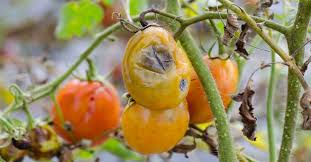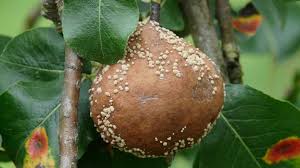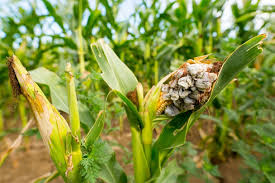There is a wide range of fungal diseases that can affect all parts of plants. Some fungi cause leaf damage, either leading to a quick death of the infected leaf as in potato blight or slower death but significant effects on the plant as in mildews and rusts.
Fungi such as Botrytis cause rots in storage organs and fruits. Scab fungus damages potatoes with loss of quality and storage ability; similarly, mildews can cause loss of quality in fruits such as grapes.
Cereals can be affected by smuts and ergot; ergot is very important as it contains various alkaloids, ingestion of which can cause constriction of blood vessels, abortions, hallucinations and mental aberrations.
Fungi can also affect and kill trees. One of the most notorious fungi is Potato late blight, which caused the Irish Potato famine, leading to a mass migration primarily to the USA. Fungal infections can also produce mycotoxins.
Read Also: How to Grow, Use and Care for Whitetinge Sedge Grass (Carex albicans)
Conventional Control Methods for Fungal Pathogens in Crops

There are currently three approaches to controlling fungal diseases. The most widespread is the application of fungicides, of which there are three types: sterilants and fumigants, which are usually used to sterilize soil or fumigate enclosed spaces; protectants, which are sprayed to prevent infections; therapeutics, which are used to “cure” infections.
There has been a continuous increase in the use of fungicides over the last 20 years or more (in the USA rising from 19.5 million kg in 1983 to 35.5 million kg in 1993), and the use of this input is increasing worldwide.
There are several problems arising from the continuous use of fungicides: resistant variants of pathogenic fungi are selected; there is an unquantified ecological impact; there are food safety concerns, and there are potential health hazards for the farmer.
Read Also: How to Grow, Use and Care for Whitegrass (Leersia virginica)
The term “pest” was originally applied to animals (insects, nematodes, mammals and birds) that caused crop losses; the term “disease” applied to viruses, bacteria and fungi. However, the term “pesticide” is now generally used for chemicals that cause biotic losses in crops.

The second approach to controlling fungal diseases, as with virus diseases, is good agronomic practice such as removing sources of infection or growing the crop either in places where the pathogen does not occur or at a time of the year when it is not spreading. The details of this approach vary with pathogen, agronomic system, climate and other conditions.
Thirdly, conventional breeding for resistance to specific fungal diseases has been used for many years. There are three major genetic traits that are used in breeding programmes:
1. Resistance can be given by various characters of plant structure such as a thick and waxy cuticle (outer skin of the plant leaves and stem) or a leaf structure that does not accumulate water drops (the spores of many fungi require water for germination).
2. When a fungus infects a plant, there is chemical communication between the two, the fungus determining a suitable host and the plant trying to resist fungal infection. Some resistance genes enhance the plant defence.
3. Although not much is known about most of such plant defences, one has been studied in detail. This is the hypersensitive response in which the plant responds by killing off its cells around the initial stages of infection. This response is due to the interaction of a plant resistance R gene and the fungal elicitor gene.
Do you have any questions, suggestions, or contributions? If so, please feel free to use the comment box below to share your thoughts. We also encourage you to kindly share this information with others who might benefit from it. Since we can’t reach everyone at once, we truly appreciate your help in spreading the word. Thank you so much for your support and for sharing!

